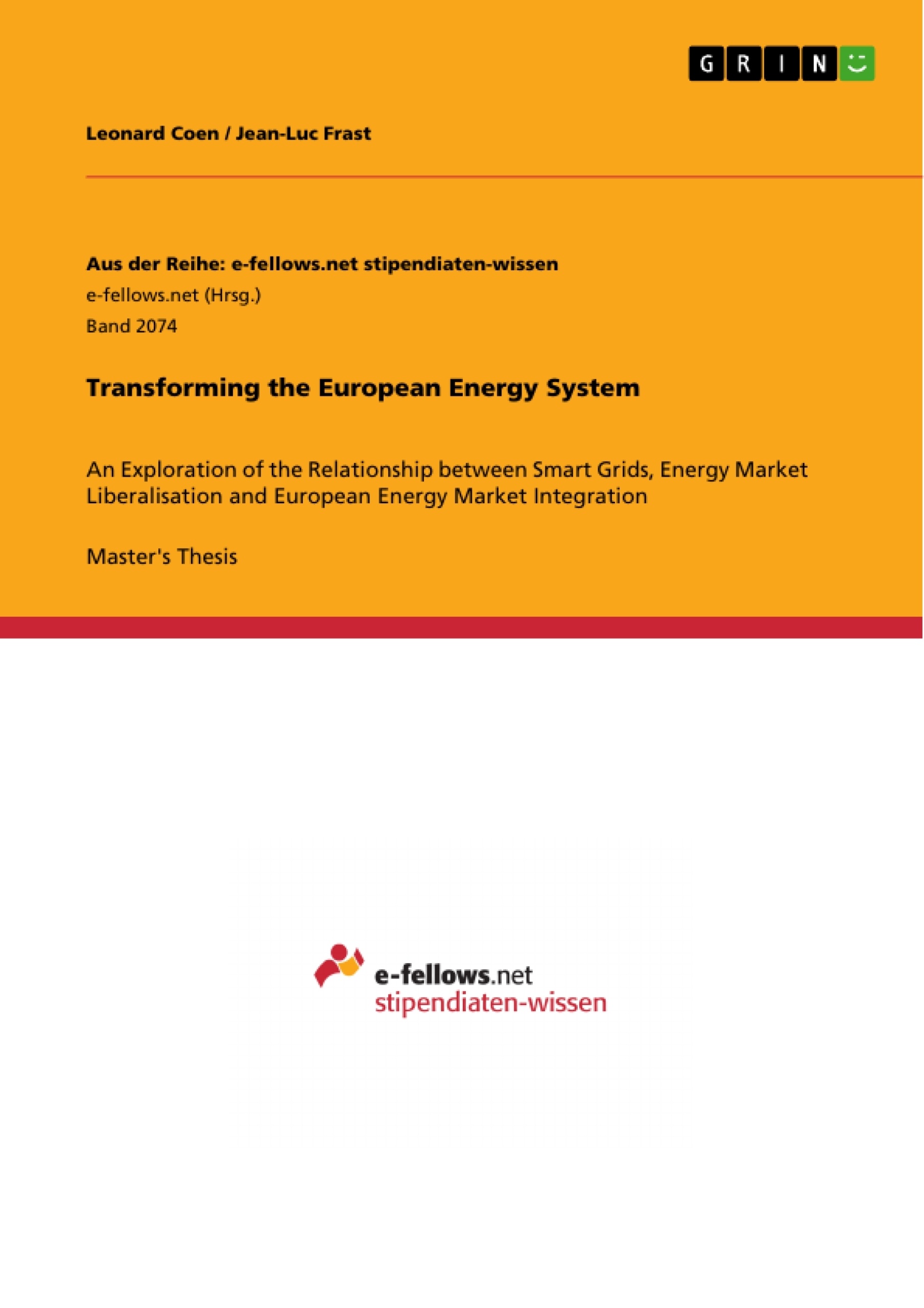The European Union aspires to be a frontrunner in the transition towards a low-carbon economy. Its energy policy aims at reconciling climate and environmental objectives, with concerns over security of supply and competitive markets. The restructuring and modernisation of the European energy system is driven by a continuous liberalisation regime in conjunction with the promotion of renewable energy sources and energy efficiency.
The implications of this strategy are manifold, whereof the modernisation and upgrade of the electricity grid is increasingly recognized to be the quintessential prerequisite to meet tomorrow's energy challenges.
The emergence of the Smart Grid has enthused industry and policy makers alike, as it has the potential to be the enabler for a future low-carbon electricity system by facilitating demand-side efficiency, increasing the shares of renewables and distributed energy generation, and enabling electrification of transport. The European Commission views the Smart Grid as the backbone of Europe's future energy infrastructure advancing the development of green energy, while making the system more stable through information and communication technologies. The deployment of Smart Grid implies a technological transformation that will have a deep impact on the whole electricity value chain.
The thesis explores the effects of this transition process with regard to energy market liberalisation, Smart Grid deployment and energy market integration. We scrutinize the relationship of these three variables, by considering Smart Grids as a function of liberalisation, liberalisation as a function of Smart Grid deployment and last but not least market integration as a function of liberalisation and Smart Grid deployment. [...]
Inhaltsverzeichnis (Table of Contents)
- ABSTRACT
- INHALTSANGABE
- ACKNOWLEDGEMENTS
- RESEARCH CONTEXT
- INTRODUCTION
- THEORETICAL FRAMEWORK
- The European Union's Energy Policy
- Market Liberalisation and Smart Grids
- Market Integration and Smart Grids
- METHODOLOGY
- Research Design and Data Collection
- Case Studies
- Stakeholder Interviews
- RESULTS AND ANALYSIS
- The Legal Framework for Smart Grids
- The Third Energy Package
- The Smart Grids Deployment
- Case Study: Germany
- Case Study: Denmark
- DISCUSSION
- The Impact of Smart Grids on Energy Market Liberalisation
- The Impact of Smart Grids on Energy Market Integration
- CONCLUSION
- RECOMMENDATIONS
- REFERENCES
- APPENDIX
Zielsetzung und Themenschwerpunkte (Objectives and Key Themes)
This master thesis explores the relationship between Smart Grids, energy market liberalisation and European energy market integration. It aims to analyse the impact of Smart Grid deployment on the European energy system, focusing on its role in driving market liberalisation and facilitating cross-border energy trade.
- The legal framework for Smart Grids in Europe
- The impact of Smart Grids on energy market liberalisation
- The role of Smart Grids in facilitating European energy market integration
- Case studies of Smart Grid deployment in Germany and Denmark
- Recommendations for best practices in Smart Grid regulation
Zusammenfassung der Kapitel (Chapter Summaries)
The thesis begins by outlining the theoretical framework for the research, exploring the European Union's energy policy, market liberalisation, and the role of Smart Grids in both. The methodology section details the research design, data collection methods, and case studies used to analyse the relationship between Smart Grids and energy market dynamics. The results and analysis chapter examines the legal framework for Smart Grids in Europe, focusing on the Third Energy Package and the specificities of Smart Grid deployment in Germany and Denmark. The discussion section delves into the impact of Smart Grids on energy market liberalisation and integration, while the conclusion offers a summary of the findings and recommendations for future policy-making.
Schlüsselwörter (Keywords)
This thesis focuses on the legal and economic aspects of Smart Grid deployment in Europe. Key themes include energy market liberalisation, energy market integration, Smart Grid technology, renewable energy, and cross-border energy trade. The research examines the regulatory framework for Smart Grids, their impact on energy markets, and the potential for their role in achieving a more sustainable and integrated European energy system.
- Citation du texte
- Leonard Coen (Auteur), Jean-Luc Frast (Auteur), 2012, Transforming the European Energy System, Munich, GRIN Verlag, https://www.grin.com/document/338084



